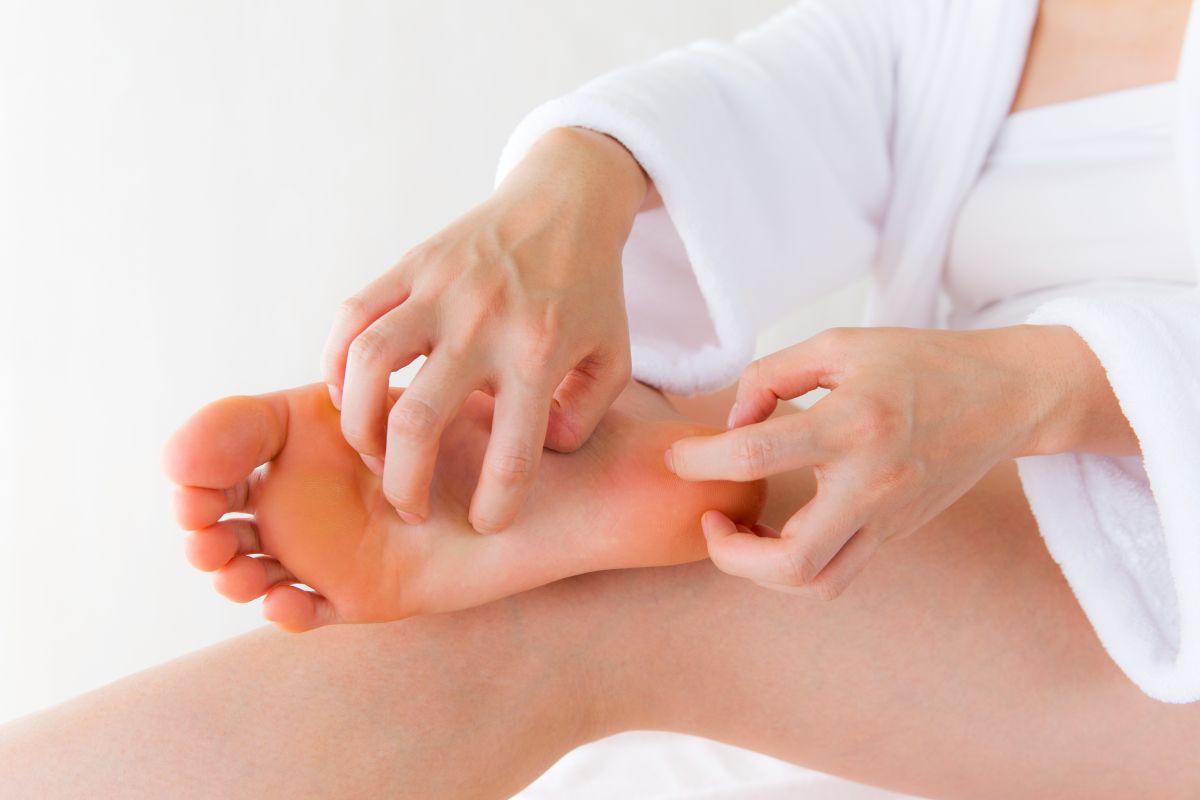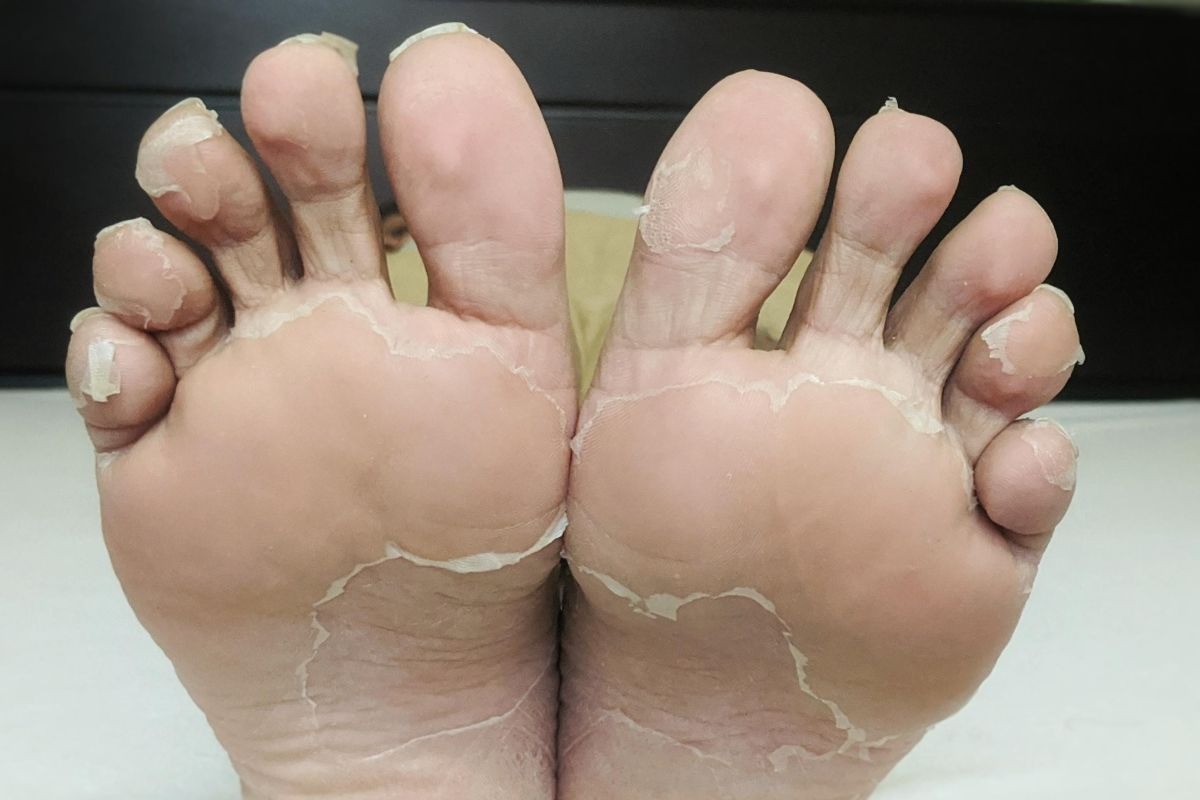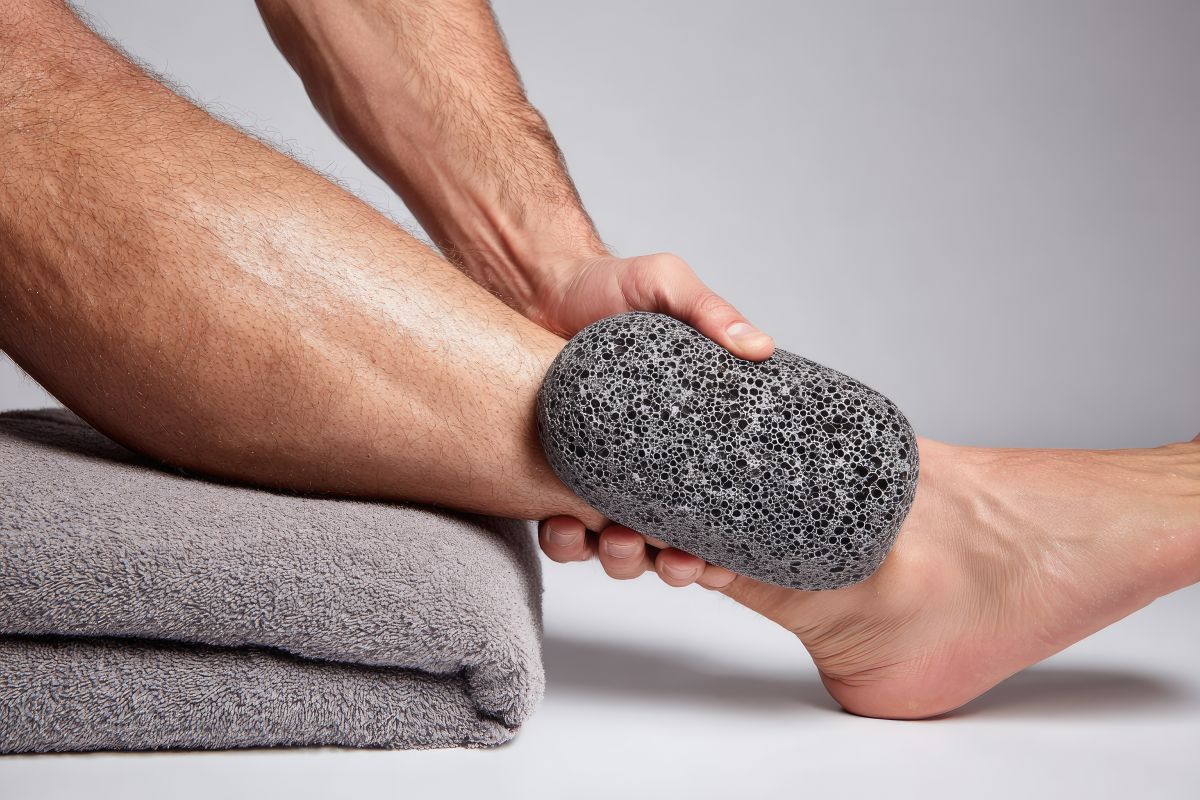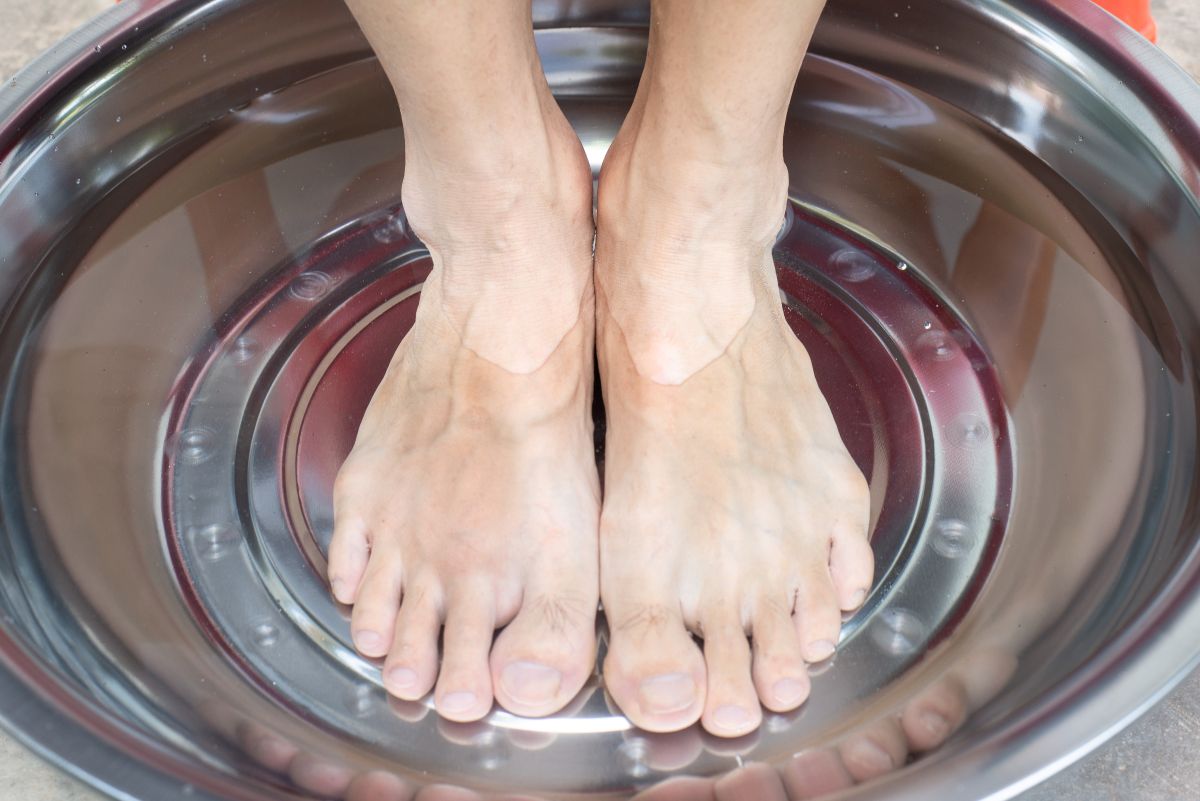Itchy Bottom of the Foot? Causes and Treatments Explained

Itchy feet are never a fun feeling. That annoying feeling might start during the day or keep you up at night. For many people, the bottom of the foot is the worst area. But what causes this? And what can you do about it?
This guide breaks down the main reasons for foot itch, peeling skin, and dead skin buildup. You’ll also learn how to exfoliate feet the right way and when to get help from experts like our team at Red Mountain Footcare in Mesa, Arizona.
Common Causes of Itchy Feet
The bottom of your foot might feel itchy for several reasons. Dry skin is a common one. When your skin lacks moisture, it becomes rough and itchy. Another reason is sweat. If sweat stays trapped in socks or shoes, it can cause irritation and bacteria buildup.
Some people also react to soaps, lotions, or fabrics. This kind of allergic reaction can make the skin on your feet itchy or even cause peeling.
Does Foot Fungus Cause Itchy Feet?
One of the most common causes of itchy feet is foot fungus, especially athlete’s foot. This is a skin infection caused by fungus that grows in warm, moist areas. You may notice redness, peeling, or a burning feeling between the toes or on the bottom of the foot.
If you suspect a fungal infection, contact a podiatrist right away. Foot fungus does not clear up on its own and can spread quickly to other parts of the body. The earlier you start treatment, the sooner you’ll be back on your feet.

There are many possible causes of peeling skin on the bottom of the foot
Why Is the Bottom of My Foot Peeling?
Peeling skin on your feet is usually caused by dryness, friction, or infection. If you walk barefoot often, wear tight shoes, or skip moisturizing, you may notice your skin flaking, thickening, and even cracking.
Fungal infections like athlete’s foot can also cause peeling. This type of peeling usually comes with redness and itchiness. In some cases, the skin peels in thick layers and looks white and soggy, especially between the toes.
What To Do If the Peeling Doesn’t Clear Up On its Own
If your peeling doesn’t go away after a few days of good foot care at home, it might be time to get help from a podiatrist. Red Mountain Footcare can examine your feet and give you the right treatment plan.
Dead Skin on Bottom of Feet
Dead skin builds up over time, especially on areas of the foot that get the most pressure, like your heels or the ball of the foot. This layer can become thick and dry, leading to cracks or a scaly texture. It’s not harmful in small amounts, but too much can make your feet uncomfortable or even painful.
Moisturizing daily helps a lot, but sometimes you need to exfoliate to get rid of thick patches of dead skin. That’s where a solid foot care routine can make a real difference.
Building a Foot Care Routine at Home
Taking care of your feet at home is easy if you have the right tools and habits. A good routine can prevent dry skin, stop fungus from growing, and keep your feet feeling smooth and pain-free. Here’s a simple foot care routine you can follow:
- Soak: Start by soaking your feet in warm water for 10 to 15 minutes. You can add Epsom salt or a splash of vinegar to help soften the skin and fight bacteria.
- Exfoliate: Use a pumice stone or gentle foot file to remove dead skin. Focus on thick areas like the heel or big toe. Don’t scrub too hard.
- Moisturize: After drying your feet, apply a rich foot cream. Look for products with ingredients like urea, shea butter, or coconut oil. These replenish and protect skin, making it soft and less prone to cracking.
Stick to this plan a few times a week, and you’ll notice a big difference in how your feet look and feel.

A pumice stone is great for gently removing dead skin from lower extremities.
How to Exfoliate Feet Without Causing Damage
It’s easy to think that the more dead skin you remove, the better. But being too aggressive can lead to injury. Here’s how to exfoliate safely without hurting your feet or making the problem worse.
Choose Safe Tools and Start Slow
One common mistake is using sharp tools or products that promise to peel off layers of skin. These can cut into healthy skin and cause infections. This is especially dangerous for people with diabetes or nerve issues, who might not feel the damage right away.
Tips for a gentle, steady approach:
- Use soft tools like a pumice stone.
- Only exfoliate once or twice a week.
- Avoid dry filing. Always soak first to soften the skin.
- Let a quality moisturizer do some of the work by softening calluses over time.
If you have diabetes, regular foot checks and gentle care are even more important. Loss of feeling in the feet is common, and small cuts or cracks can lead to more serious problems fast. If you’re unsure about how to exfoliate safely, contact our team at Red Mountain Footcare. We work one-on-one with you to customize a foot care routine for your needs.
When Itchy Feet Could Mean Something Serious
Most of the time, itchy feet aren’t a big deal. But in some cases, they point to a more serious problem.
Nerve Damage
People with diabetes may experience neuropathy, which is nerve damage that often starts in the feet. Symptoms include burning, tingling, and constant itching. If you have diabetes and notice foot discomfort that doesn’t go away, it’s time to talk to a specialist. There are many exercises to help manage this condition.
Medical Conditions
Infections, autoimmune conditions, and poor circulation can also cause long-term foot symptoms. These should always be checked by a medical professional.
Fungal Infections
Foot fungus is a serious issue that will get worse if not treated properly. Mild cases might go away with antifungal creams or powders, but stubborn cases need stronger medicine. Left untreated, the fungus can spread to your toenails, hands, or even groin area.
Consult With a Medical Professional
If you’re concerned your symptoms could be caused by one of the conditions listed above, it’s time to take action. Contact the experts at Red Mountain Footcare to get a personalized treatment plan for your foot problems. We take a patient-first approach, focusing on your needs and your concerns. We can help figure out what’s really going on and create a safe, effective care plan.

A warm foot soak can help alleviate itchy feet
DIY Foot Care Treatments You Can Try at Home
If your symptoms are mild, you can try a few DIY treatments at home to relieve discomfort and improve the look of your feet.
Try these simple tricks:
- Soak your feet in a mixture of warm water and vinegar to fight mild fungus and bacteria.
- Use a homemade sugar scrub made with coconut oil to gently remove dead skin.
- Wrap your feet in plastic or wear socks after applying lotion to lock in moisture overnight.
These treatments can help with dryness, mild itchiness, and flaking skin. Just remember, if things aren’t getting better or you notice signs of infection, don’t wait. Schedule your appointment with Dr. Hardy for a comprehensive exam and personalized treatment plan.
Keep Your Feet Healthy and Itch-Free
Itchy feet and peeling skin are common problems, but that doesn’t mean you have to live with them. You can prevent serious foot problems by understanding the causes of itchy feet, learning how to exfoliate feet the right way, and sticking to a smart routine.
If you have diabetes, foot care becomes even more important. Pay attention to how your feet feel and look, and don’t ignore signs like burning, peeling, or sudden itchiness. For expert help with diabetic foot care, foot fungus, or general foot care at home, reach out to our team of experts for a personalized treatment plan.
Take the Guesswork Out of Itchy Foot Problems.
Contact Red Mountain Footcare
Red Mountain Footcare offers personalized treatment plans, diabetic foot checks, and help with stubborn skin and nail conditions. You don’t have to guess. We make sure your feet get the right care.
